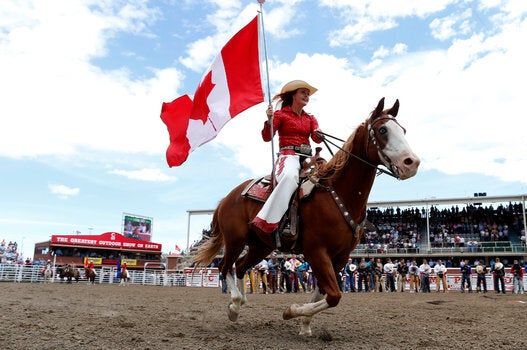Alberta and Texas – both energy-rich jurisdictions, both coming off economic booms due to falling oil prices, both feeling the pinch.
However, a new study from the Fraser Institute suggests that mismanagement and government spending has left Alberta in a worse slump than the Longhorn State.
Advertisement
"When you look at the fiscal situation in the two places, the story is quite different," Ben Eisen, co-author of One Energy Boom, Two Approaches: Fiscal Restraint Has Left Texas in Better Shape than Alberta, told the Edmonton Journal.
"Texas is right now in much better fiscal condition than Alberta."
According to their findings, here's why Texas comes out on top:

Ascent Xmedia via Getty Images
Government spending per person in Alberta increased by 49 per cent between 2004-2014. In Texas, it only increased by 37.3 per cent.

Hero Images via Getty Images
In 2004/05, Alberta spent 68.4 per cent more per person than Texas.

Ascent Xmedia via Getty Images
By 2013/14, Alberta was spending 82.8 per cent more per person than Texas.
Advertisement

NurPhoto via Getty Images
"The spending increases (in Alberta) were faster than the rate of inflation plus population, faster than the rate of economic growth and that’s what created the problem," Eisen told the Financial Post.

Topher Seguin / Reuters
The absence of disciplined spending left the province with a string of budget deficits, leading to "significant erosion in its financial position," says the study.

ASSOCIATED PRESS
From 2009-2013, Texas ran surpluses.
Advertisement

Todd Korol / Reuters
From 2009-2013, Alberta ran deficits.

Bloomberg via Getty Images
In 2006/07, Alberta held net assets representing 12.4 per cent of provincial GDP. By 2013/14, those assets had declined to 2.9 per cent.

Allan Baxter via Getty Images
By contrast, Texas saw very little change in its asset position in this period.
Advertisement

The Fraser Institute
Oil and gas activity contributes 27.4 per cent of Alberta’s total GDP, while it only contributes to 12.3 per cent of Texas’s GDP – showing more diversity in Texas's economy.